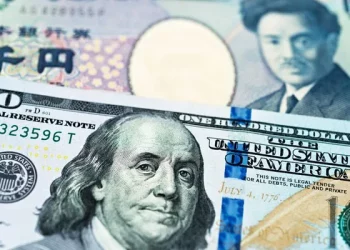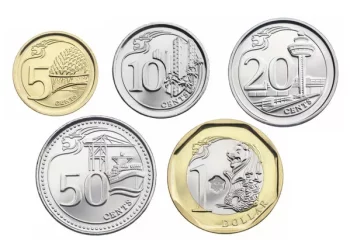In the world of foreign exchange (forex) trading, currency conversions and the exchange rates between different currencies are of paramount importance. One common conversion that traders and travelers alike often look into is the conversion of the Indian Rupee (INR) to the US Dollar (USD). For anyone interested in international trade, investment, or simply planning a trip abroad, understanding how the value of 500 Indian Rupees translates into USD is essential.
In this article, we will dive into various factors influencing the INR to USD exchange rate, how currency conversion works, the key elements that affect the currency markets, and how you can use this knowledge in your financial decisions, be it for trading, saving, or spending abroad.
1. The Basics of Currency Exchange and Conversion
Currency exchange refers to the process of converting one currency into another. In the context of India and the US, the Indian Rupee (INR) is exchanged for the US Dollar (USD) when people or businesses need to transact internationally. The exchange rate, often referred to as the forex rate, is the price of one currency in terms of another.
For example, if the current exchange rate is 1 INR = 0.012 USD, it means that for every 1 Indian Rupee, you would receive 0.012 US Dollars. So, to calculate how much USD you would get for 500 Indian Rupees, you simply multiply 500 by the exchange rate.
2. What is the Current Exchange Rate for INR to USD?
Exchange rates fluctuate constantly, influenced by various economic factors such as inflation rates, interest rates, economic growth, and geopolitical events. Therefore, it is important to check the current exchange rate before making any decisions.
For instance, at the time of writing this article, 1 Indian Rupee might be worth approximately 0.012 USD. This would mean that 500 INR is equivalent to 6 USD. However, exchange rates can change due to various market dynamics, so the value of 500 INR in USD may differ on any given day.
It’s important to note that when you actually exchange currencies, you might not get the same rate as the one quoted by financial news sources or online tools. This is because financial institutions, like banks or exchange services, often apply a margin to the rate to cover their costs.
3. Key Factors Influencing INR to USD Exchange Rate
The exchange rate between the Indian Rupee and the US Dollar is influenced by a wide range of factors. Let’s explore some of the major factors that impact currency exchange rates.
Interest Rates
One of the most important factors influencing currency values is interest rates. The Reserve Bank of India (RBI) and the US Federal Reserve (Fed) set interest rates, which directly impact the value of their respective currencies. When interest rates in the US are higher than in India, it attracts more foreign capital to the US, increasing demand for the US Dollar and decreasing demand for the Indian Rupee. This leads to the strengthening of the USD and a weakening of the INR.
On the other hand, when the RBI raises interest rates, it could strengthen the INR by attracting more investments into India. However, the relationship between interest rates and currency values is not always straightforward, and traders monitor various macroeconomic indicators to make informed decisions.
Inflation Rates
Inflation refers to the rate at which the general level of prices for goods and services rises, eroding the purchasing power of money. If India experiences higher inflation than the US, the value of the Indian Rupee may depreciate relative to the US Dollar. High inflation reduces the purchasing power of the domestic currency, making imports more expensive and decreasing the demand for the Rupee in international markets.
Conversely, if inflation is low in India relative to the US, the Rupee may appreciate against the USD.
Trade Balances
A country’s trade balance, which is the difference between the value of its exports and imports, can have a significant impact on its currency value. If India exports more goods and services than it imports, it will lead to increased demand for the Indian Rupee, as foreign buyers need to convert their currency to pay for Indian goods. This can cause the INR to appreciate against the USD.
However, if India has a trade deficit, meaning it imports more than it exports, there will be a greater demand for foreign currencies like the USD, which can put downward pressure on the INR.
Economic Performance and GDP Growth
Economic performance plays a crucial role in the strength of a currency. The US and India are both large economies, but their growth trajectories differ. Strong economic growth in India can lead to a stronger Rupee as it signals to investors that the country is a favorable destination for capital. On the other hand, a slow-growing economy in India can result in a weaker INR, as investors may look to move their capital to more stable or higher-performing economies like the US.
The US, being the world’s largest economy, has a significant influence on the global currency markets. A strong US economy generally strengthens the US Dollar, which might weaken the INR.
Political Stability and Geopolitical Events
Political stability is another key factor affecting exchange rates. Political uncertainty in India, such as changes in government policies, can lead to a decline in investor confidence, causing the INR to weaken. Similarly, major geopolitical events like wars, sanctions, or diplomatic tensions can lead to increased volatility in the forex market, as traders seek safe-haven currencies like the US Dollar.
For example, a war or political instability in any major country could prompt investors to shift their capital into the US Dollar, causing the INR to depreciate.
Speculation and Market Sentiment
Forex markets are also influenced by speculation and market sentiment. Traders and investors make predictions about currency movements based on their expectations of future events. If there is widespread belief that the Indian economy will perform well in the coming months, the Rupee might appreciate against the Dollar, even before the actual economic data is released.
Speculation about the Federal Reserve’s interest rate decisions, or political events in India, can also cause fluctuations in the INR/USD exchange rate.
4. How to Convert 500 Indian Rupees to US Dollars
To convert 500 INR to USD, you need to know the exchange rate at the time of the transaction. For example, if the exchange rate is 1 INR = 0.012 USD, the calculation is as follows:
500 INR×0.012 USD=6 USD
However, keep in mind that the actual amount you receive may vary depending on the forex provider and any associated fees. Banks, currency exchange services, or online platforms like PayPal or TransferWise might offer different rates or charge fees for conversion.
5. Trading the INR/USD Pair
For forex traders, understanding the dynamics of the INR/USD pair is crucial for making informed decisions in the market. Traders use various technical and fundamental analysis methods to predict currency movements. These methods include studying historical price trends, analyzing macroeconomic data, and monitoring central bank policies.
For example, if a trader expects the US Federal Reserve to raise interest rates, they may speculate that the US Dollar will strengthen against the Rupee. Conversely, if they believe that India’s economy will outperform the US economy, they might bet on the Rupee appreciating against the Dollar.
Currency pairs like INR/USD are often traded in lots, which represent a standardized amount of currency. A standard lot size in forex trading is typically 100,000 units of currency, but smaller lot sizes such as mini and micro lots are also available for retail traders.
Conclusion
The value of 500 Indian Rupees in US Dollars fluctuates with market conditions, economic factors, and investor sentiment. Understanding the various elements that influence the INR/USD exchange rate is crucial for both casual travelers and serious forex traders.
As currency markets can be volatile, it is always important to stay informed about the latest developments in both India and the US. Whether you’re exchanging currency for travel, making international payments, or trading forex, having a clear understanding of the exchange rate and the factors driving it will help you make more informed financial decisions.
By monitoring exchange rates and market conditions, individuals and businesses can take advantage of favorable exchange rates, minimize losses, and better plan their financial activities in a global economy.
Related Topics:



























